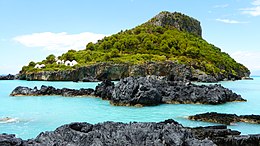
The province of Grosseto is a province in the Tuscany region of Italy. Its capital is the city of Grosseto. As of 2013 the province had a total population of 225,098 people.
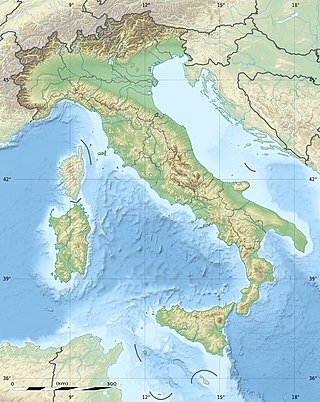
The geography of Italy includes the description of all the physical geographical elements of Italy. Italy, whose territory largely coincides with the homonymous geographical region, is located in southern Europe and comprises the long, boot-shaped Italian Peninsula crossed by the Apennines, the southern side of Alps, the large plain of the Po Valley and some islands including Sicily and Sardinia. Italy is part of the Northern Hemisphere. Two of the Pelagie Islands are located on the African continent.

The Tyrrhenian Sea is part of the Mediterranean Sea off the western coast of Italy. It is named for the Tyrrhenian people identified with the Etruscans of Italy.
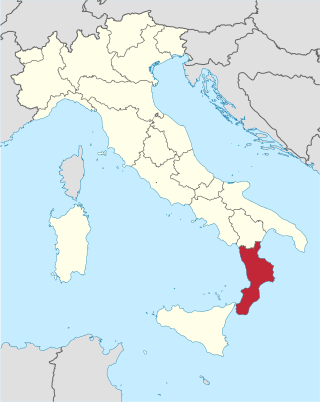
Calabria, is a region in Southern Italy. It is a peninsula bordered by Basilicata to the north, the Ionian Sea to the east, the Strait of Messina to the southwest, which separates it from Sicily, and the Tyrrhenian Sea to the west. With almost 2 million residents across a total area of approximately 15,222 square kilometres (5,877 sq mi), it is the tenth most populous and the tenth largest Italian region by area. Catanzaro is the region's capital, while Reggio Calabria is the most populous city in the region.

Tourism in Italy is one of the economic sectors of the country.

Primula is a genus of herbaceous flowering plants in the family Primulaceae. They include the primrose, a familiar wildflower of banks and verges. Other common species are P. auricula (auricula), P. veris (cowslip), and P. elatior (oxlip). These species and many others are valued for their ornamental flowers. They have been extensively cultivated and hybridised. Primula are native to the temperate Northern Hemisphere, south into tropical mountains in Ethiopia, Indonesia, and New Guinea, and in temperate southern South America. Almost half of the known species are from the Himalayas.

Ponza is the largest island of the Italian Pontine Islands archipelago, located 33 km (21 mi) south of Cape Circeo in the Tyrrhenian Sea. It is also the name of the commune of the island, a part of the province of Latina in the Lazio region.

John Philip Jacob Elkann is an Italian industrialist. In 1997, he became the chosen heir of his grandfather Gianni Agnelli, following the death of Gianni's nephew Giovanni Alberto Agnelli and since 2004 has been leading the Agnelli family, an Italian multi-industry business dynasty. He chairs the automaker Stellantis and is the chief executive officer (CEO) of Exor, the holding company controlled by the Agnelli family, which also holds a controlling stake in Ferrari, CNH Industrial, Iveco Group, Juventus F.C. and The Economist Group. In July 2018 he was appointed chairman of Ferrari after Sergio Marchionne left due to health issues.

The Tuscan Archipelago is a chain of islands between the Ligurian Sea and Tyrrhenian Sea, west of Tuscany, Italy.
Kakaban island is part of the Derawan Islands, East Kalimantan, Indonesia.
Praia a Mare is a town and comune of the province of Cosenza in the Calabria region of Italy. It is a beach resort on the Tyrrhenian Sea.

Papasidero is a village and comune in the province of Cosenza in the Calabria region, southern Italy. It is part of Pollino National Park.

Palmi is a comune (municipality) of about 19,303 inhabitants in the province of Reggio Calabria in Calabria.

Aldo Brovarone was an Italian automobile designer and the chief stylist with Carrozzeria Pininfarina (1974-1988) – widely known for a prominent range of work including the Dino 206 GT, Lancia Gamma Coupé and the Peugeot 504 (sedan).
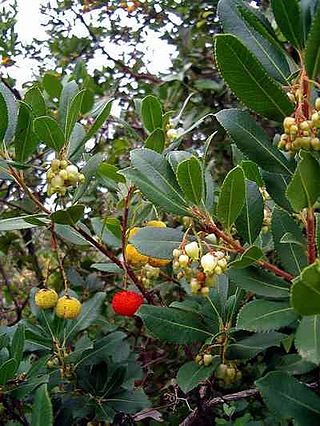
The flora of Italy is all the plant life present in the territory of the Italian Republic. The flora of Italy was traditionally estimated to comprise about 5,500 vascular plant species. However, as of 2019, 7,672 species are recorded in the second edition of the flora of Italy and in its digital archives Digital flora of Italy. In particular, 7,031 are autochthonous and 641 are non native species widely naturalized since more than three decades. Additionally, further 468 exotic species have been recorded as adventitious or naturalized in more recent times.

Scilla Lighthouse is an active lighthouse in Calabria just opposite of Capo Peloro Lighthouse which is on the Sicilian coast; both lighthouses direct the ships from the north into the Strait of Messina. The lighthouse is settled on the seaward side terrace of the Castello Ruffo di Scilla, in the town of Scilla on the Tyrrhenian Sea.

Gaiola Island is one of the minor islands of Naples, off the city's Posillipo residential quarter, in the Metropolitan City of Naples and Campania region, southwestern Italy. It is located within the "Parco sommerso di Gaiola".

The Salerno–Reggio Calabria railway is the most important north–south railway connection between Sicily, Calabria and the rest of the Italian peninsula. It forms the southern section of Corridor 1 of the European Union's Trans-European high-speed rail network, which connects Berlin and Palermo. Its southern part, between Rosarno and San Lucido is also used as an RFI freight route between the Port of Gioia Tauro and the Adriatic railway.

The Deer Cave is a natural cave at the Salento coast near the town of Porto Badisco, around 8 km (5.0 mi) south of Otranto in Apulia, Italy. Unknown before 1970 it came to immediate international attention after the discovery of its impressive, innovative and enigmatic complex galleries of prehistoric parietal wall paintings.
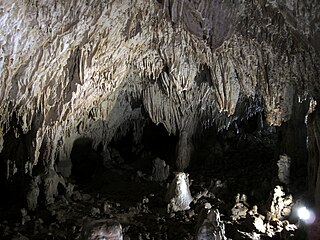
The Romito cave is a natural limestone cave in the Lao Valley of Pollino National Park, near the town of Papasidero in Calabria, Italy. Stratigraphic record of the first excavation confirmed prolonged paleo-human occupation during the Upper Paleolithic since 17,000 years ago and the Neolithic since 6,400 years ago. A single, but exquisite piece of Upper Paleolithic parietal rock engraving was documented. Several burial sites of varying age were initially discovered. Irregularly recurring sessions have led to additional finds, which suggests future excavation work. Notable is the amount of accumulated data that has revealed deeper understanding of prehistoric daily life, the remarkable quality of the rock carvings and the burial named Romito 2, who exhibits features of pathological skeletal conditions (dwarfism).
